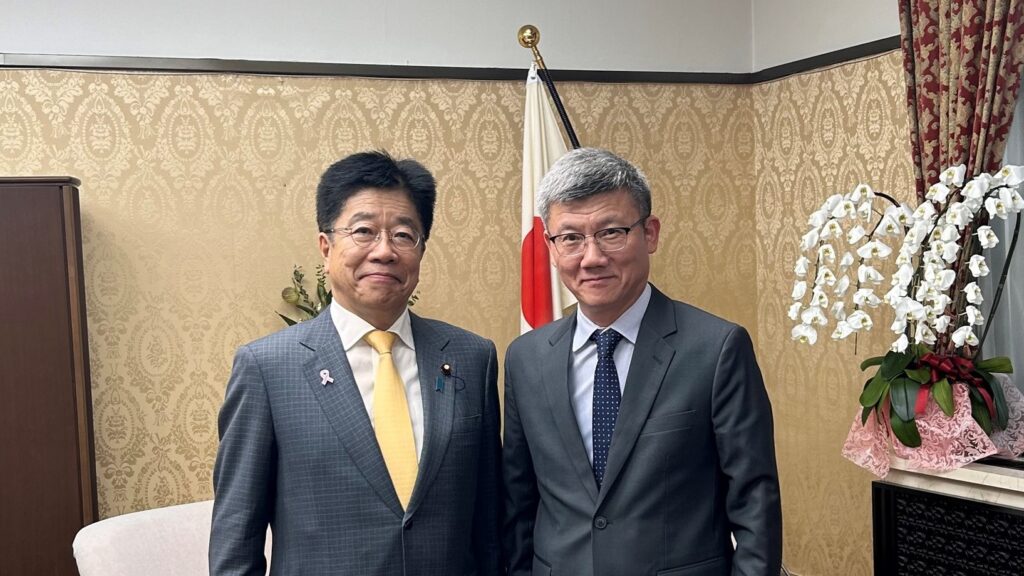
SINGAPORE, November 28, 2024 – Japan’s economy is recovering from a sharp downturn in Q1 2024 while inflation has remained elevated at above 2 percent for an extended period. However, a rebound in exports and consumption, the latter driven by robust wage growth, is expected to boost growth in 2025. Positive business sentiment continues to support resilient investment, setting the stage for sustained economic momentum. As Japan navigates a transition to a higher inflation environment and positive interest rates regime, careful management of emerging risks and challenges is essential. By implementing well-calibrated policies and structural reforms, Japan can make a smooth transition to a new steady state of higher inflation and growth, while simultaneously rebuilding fiscal buffers to enhance the country’s resilience against long-term challenges and shocks.
This preliminary assessment was made by the ASEAN+3 Macroeconomic Research Office (AMRO) after its Annual Consultation Visit to Japan from November 12 – 22, 2024.
The mission was led by AMRO Principal Economist Runchana Pongsaparn. AMRO Director Kouqing Li and Chief Economist Hoe Ee Khor participated in the policy discussions and had courtesy calls with Japan Finance Minister Katsunobu Kato and Bank of Japan Governor Kazuo Ueda. The discussions covered Japan’s growth outlook, wage hikes’ impact on firms’ cost dynamics and inflation, exchange rate effects, fiscal consolidation and public debt challenges amid higher interest rates, and structural reforms to boost labor productivity, digitalization and green transformation.
Economic developments and outlook
“The Japanese economy has slowed following its post-pandemic rebound, with growth projected at 0.1 percent in 2024. Following a sharp contraction in Q1, growth turned positive in Q2 and Q3, supported by steady investment and a rebound in exports and consumption while inflation remained elevated,” said Dr. Pongsaparn. “The outlook for 2025 is brighter, with growth expected at 1.3 percent, fueled by sustained wage gains, strong business investment, and robust goods exports and tourism.”
Inflation has remained above the 2-percent inflation target for an extended period, driven by yen depreciation, record wage growth, and the phased expiration of energy subsidies since May. Energy cost pressures are expected to ease for the rest of 2024; as the reintroduction of energy subsidies brought CPI (excluding fresh food) inflation down to 2.4 percent in September. For the whole of 2024, inflation is projected at 2.3 percent and moderate slightly to 2.2 percent in 2025.
Japan’s external position remains strong, supported by a large primary income surplus and a narrower trade deficit compared to last year. In 2023, the current account posted a surplus of 3.6 percent of GDP. In Q1-Q3 2024, the current account surplus rose to 5.0 percent of GDP. The current account surplus is projected to remain high at 4.2 percent and 4.1 percent of GDP in 2024 and 2025, respectively.
According to AMRO’s estimate, despite a high level of spending in FY2023, the fiscal deficit decreased to 2.9 percent of GDP from 3.6 percent in FY2022, as tax revenue reached a record high for the fourth consecutive year. The fiscal deficit is projected to widen to 3.2 percent in FY2024 despite the winding down of some economic support packages, due to a sharper fall in revenue from a temporary income tax cut and lower carryover revenue from the previous year.
Risks, vulnerabilities, and challenges
Japan faces significant exposure to external risks. As a highly open economy and a leading global financial hub, Japan could be affected by and could have potential impact on global market volatility. Key external challenges also include a weakening global economic outlook and spikes in commodity prices.
Domestically, inflation presents both upside and downside risks. A slowdown in wage growth could undermine the Bank of Japan’s (BOJ) efforts to achieve its 2-percent inflation target. Conversely, a significant overshoot of inflation above its target could force a sharp tightening of monetary policy, straining households and businesses unprepared for abrupt adjustments. Rising interest rates would also challenge fiscal sustainability by driving up interest payments on the government’s substantial debt.
Policy recommendations
The BOJ’s exit from large-scale monetary easing measures is appropriate and well-timed. The BOJ should continue to raise the short-term policy rate once there is firmer evidence that underlying inflation is becoming anchored at 2 percent and economic activity will be robust. The pace of rate hikes should remain gradual and data dependent. In addition, the BOJ should maintain its predictable and flexible approach to reduce its purchase amount of Japanese government bonds (JGBs) as well as clear communication with market participants.
In view of continuing uncertainty in economic conditions and potential risks emerging from the credit side, more emphasis could be placed on the assessment of credit risk in a forward-looking manner, which includes stress testing, scenario-based assessment and enhancement in loan loss provisioning, among other measures, in a way to prepare for future debt repayment capacity of borrowers.
Given the high level of public debt and mounting fiscal pressures from an aging population, stronger fiscal consolidation efforts are necessary to rebuild fiscal buffers. Strengthening revenue mobilization is integral to fiscal consolidation strategy. Spending reviews and Evidence-Based Policy Making (EBPM) could be enhanced by strengthening their links to the medium-term fiscal planning and improve public spending efficiency. Credibility of the medium-term fiscal plan could be strengthened with realistic macro-fiscal projections that are consistent with medium-term fiscal targets.
Over the long-term, fiscal policy needs to take a proactive role in addressing structural challenges and enhancing growth potential. To address labor market challenges, policy efforts could follow a two-pronged approach by boosting labor productivity while welcoming foreign workers to fill in shortages in certain sectors or professions.
The AMRO team would like to express its gratitude to the Japanese authorities and other participating organizations for their cooperation and candid exchange of views.
About AMRO
The ASEAN+3 Macroeconomic Research Office (AMRO) is an international organization established to contribute toward securing macroeconomic and financial resilience and stability of the ASEAN+3 region, comprising 10 members of the Association of Southeast Asian Nations (ASEAN) and China; Hong Kong, China; Japan; and Korea. AMRO’s mandate is to conduct macroeconomic surveillance, support regional financial arrangements, and provide technical assistance to the members. In addition, AMRO also serves as a regional knowledge hub and provides support to ASEAN+3 financial cooperation.

AMRO Director, Kouqing Li (right), met with Minister of Finance of Japan, Katsunobu Kato (left).
